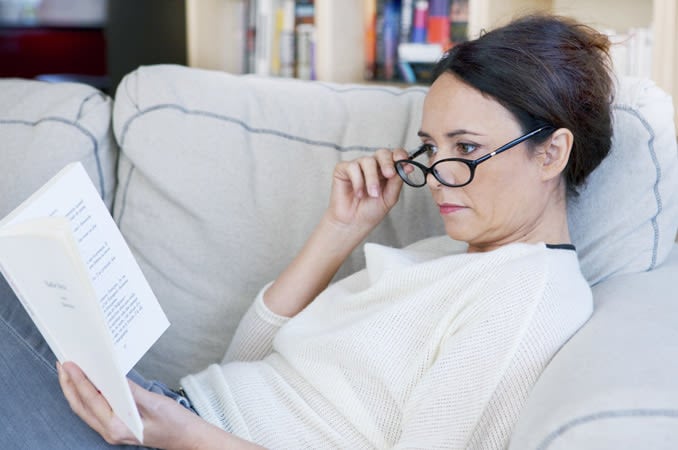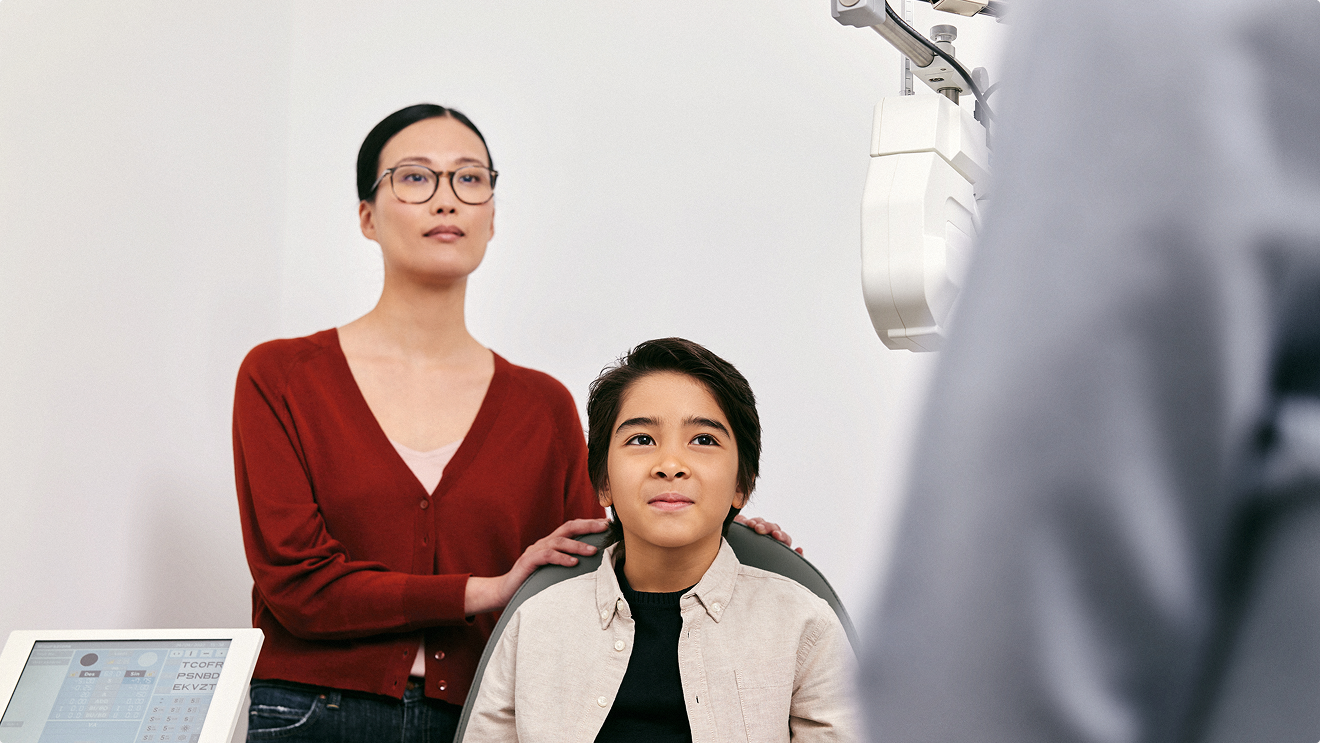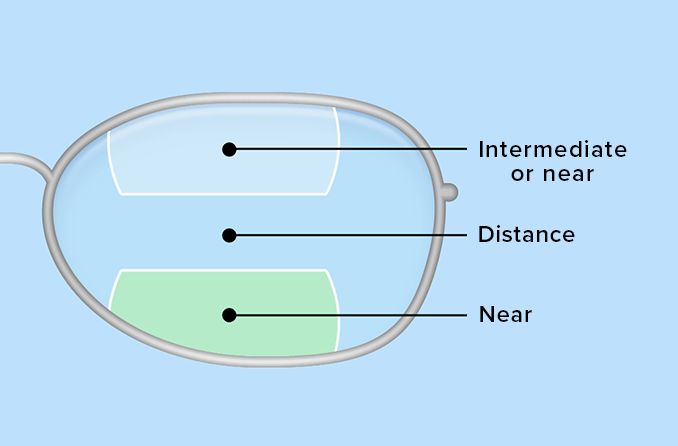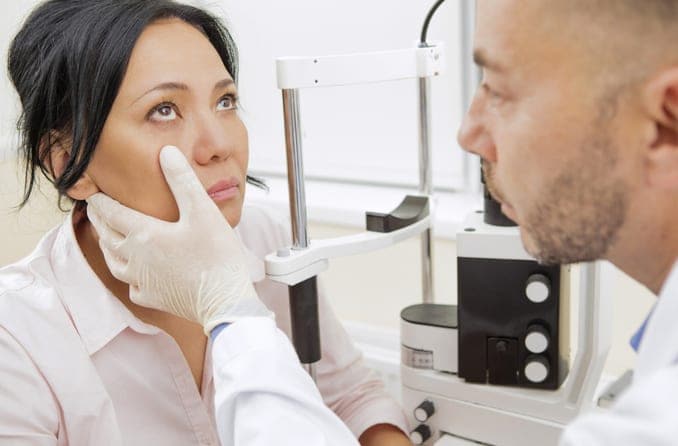Why Santa Claus wears glasses
As the holiday season approaches, it’s natural to wonder, “Why does Santa Claus wear glasses?” After all, he seems to wear them in every holiday movie, picture book and advertisement. But do they really help in correcting his vision? Or are they just a cultural phenomenon?
Most people credit the look of modern-day Santa Claus to the artist Thomas Nast. Nast created over 30 popular magazine images in the 1860s. These portraits laid the groundwork for Santa as we know him.
In more recent history, Santa Claus is often seen wearing a pair of glasses above his thick, white beard. And although glasses weren’t around* when St. Nicholas himself was born (around 270 A.D.), it’s safe to say that Santa has since found great use in eyeglasses.
Here’s a bit more about Santa Claus, his eyeglasses and some reasons that he may wear them.
*The earliest form of eyeglasses was invented in 13th century Italy. St. Nicholas lived in the 4th century.
Santa’s eyewear history
The grandfatherly symbol of seasonal generosity with the snow-white beard and wire-rimmed spectacles is actually a relatively recent reboot of St. Nicholas (or Sinter Klaas, as he’s known in the Netherlands).
St. Nick, who died in 343 A.D. at age 73, was beloved for freely sharing his inherited wealth with the less fortunate. But he probably didn’t wear glasses. St. Nick lived before eyeglasses were invented.
Most credit the modern-day, red-and-white remake of jolly old St. Nick to German-born American artist Thomas Nast, who fashioned 33 images of him over two decades for Harper’s Weekly magazine from 1863 to 1886.
Over the next century, Santa donned glasses, like much of mature America, as a newly invented vision aid and status symbol. In 20th-century America, glasses were a natural fit for an older gent with so many lists of nice and naughty kids to manage.
The “advent” of Santa’s glasses
Glasses started to become more accessible to folks in the 1800s and 1900s. Before then, they may have been seen as a status symbol. Once spectacles became more common, Santa’s glasses were considered relatable. In turn, he became even more popular among all societal classes.
Santa’s glasses also gave him a sense of comfort, wisdom and approachability. They added to his character and became an iconic piece of the Santa suit. This continues to be true today, as a glasses-wearing Santa is often seen throughout popular culture.
Why Santa might need glasses
There are several reasons why Santa might need glasses. Job roles such as detailed toymaking and reading small print on the nice and naughty lists are two examples. Here’s where his glasses come in handy.
Making his list (and checking it twice)

Presbyopia affects adults around age 40 and older. The condition is a natural part of aging and makes it difficult to see things clearly up close.
As an older adult, Santa Claus has presbyopia. But for him and his fellow presbyopes, a pair of reading glasses can be a big help for reading small text in books, phones, menus and more. One thing in particular that Santa needs to read up close? His nice and naughty lists.
Toy making
Santa may need prescription glasses in order to see what he’s doing while he puts together toys in the workshop.
He could be nearsighted and need glasses to see things far away. This could include the supplies stored across the workshop. They’re also helpful for him to see which elves work in the large shop each day.
Or he could be farsighted and need glasses to see things up close. This is important in order to see the small details of the toys he builds and which part of a toy connects to another. He may need his glasses to read directions for toy assembly, too.
It’s also possible that Santa needs multifocal glasses in order to see clearly at all distances. Multifocals include bifocals, trifocals or progressives. The North Pole’s optometrist can help him decide which is best.
Driving the sleigh at night
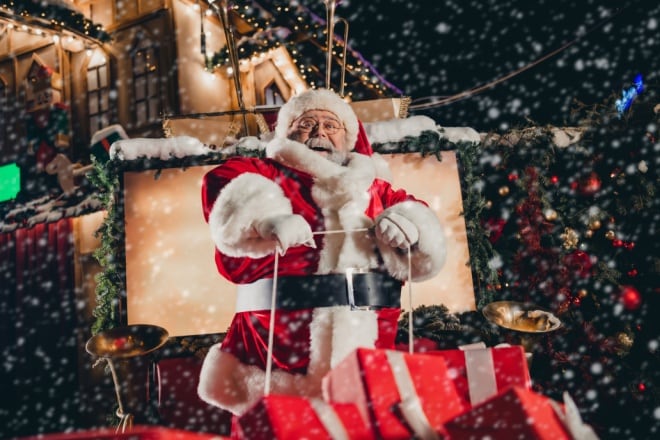
A lot of people need glasses to see clearly on the road (or in the sky). Santa could need prescription glasses to see ahead of him and to look out for traffic signals. He also needs clear vision to spot each chimney and rooftop before making a landing.
It may also be difficult to navigate a dark night sky, even if the sleigh is guided by Rudolph’s bright, glowing nose! That’s why Santa keeps his vision prescription updated before his big night of the year. He also makes sure the sleigh’s mirrors are adjusted and cleaned before taking off.
Note: Be sure to speak with your eye doctor if you have trouble driving at night. You could need an updated prescription or an evaluation for any underlying vision problems.
Santa’s vision correction technologies
Does Santa wear glasses with modernized styles or lenses? It depends on what he truly needs his glasses for. If he needs glasses to see far away as he drives his sleigh and close up to read his lists, he may benefit from a multifocal lens.
Multifocal lenses help people see clearly at different distances. Bifocals have a section at the bottom of the lens for seeing nearby and a section at the top for seeing far away. These sections are divided by a small visible line. They’ve been around since the late 1700s.
A more advanced version of multifocals is progressives. Progressives are a type of multifocal lens that provides a smooth transition between vision prescriptions in one lens for a seamless experience. They don’t have a visible line like bifocals.
Progressives weren’t made widely available until the 1960s. And by the 1960s, Santa was several centuries into his demanding job. Progressives probably made things much easier for him to switch between driving his sleigh and checking his lists.
Ever see Santa without his glasses? That’s because he’s been known to wear contact lenses on occasion, too.
Pop culture references
The depiction of Santa Claus in popular culture often includes a signature set of spectacles. Some of the most memorable portrayals include:
- Richard Attenborough in Miracle on 34th Street
- Patton Oswalt in A Very Harold & Kumar Christmas
- Matthew Perry in the Friends episode, “The One with the Holiday Armadillo”
- Chris Farley in Saturday Night Live’s sketch, “Motivational Santa”
- Tim Allen in The Santa Clause
- Ed Asner in Elf
- Paul Giamatti in Fred Claus
- Whoopi Goldberg in Call Me Claus
While many celebrity Santas wear the traditional round, wire-rimmed glasses, some wear half-moon style glasses. And some, like Chris Farley, wear thick-rimmed glasses with the suit.
Cultural variations in depictions of Santa
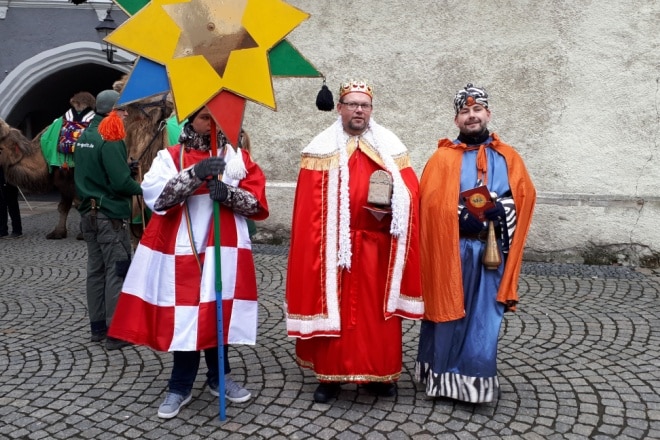
Santa Claus looks different around the world. Some cultures have different representations of Santa altogether. Some include three kings, a kind witch and even a goat. Regardless of these differences, presents are often involved during the holiday season.
Eyewear depends on each individual Santa. Many depictions of (human) Santas can be seen wearing wire-rimmed glasses similar to our American Santa Claus.
Why Mrs. Claus wears glasses

So now that we know roughly how Santa chooses to see clearly during the holidays, what about Mrs. Claus? After all, she’s the cookie baker and Christmas story reader of the pair. How does she read recipes and Christmas stories so closely?
Mrs. Claus also wears glasses. The reasons could be quite similar to those of Santa’s, though everyone’s eyes are different. Being that she is an older individual, it’s safe to assume that she also needs reading glasses for some of her North Pole duties.
Mrs. Claus’s fashionable glasses
Every glasses wearer has the benefit of choosing fashionable frames. The options are never-ending, whether you wear glasses to see up close or far away. Donning non-prescription glasses simply as a fashion accessory is also an option.
Mrs. Claus’s fashionable glasses are often seen in styles, such as wire-rimmed and even pink frames. It’s possible she chose these frames based on her face shape or skin tone.
Scientific insights into vision correction
Countless children and adults share the same dilemma as Santa Claus; they need glasses. Glasses are designed to improve vision based on the problem at hand. If you have trouble seeing up close, far away or have blurry vision at any distance, you may need prescription lenses.
Since Santa was born, glasses have evolved to aid these vision problems known as refractive errors. These include:
- Nearsightedness — When faraway objects appear blurry
- Farsightedness — When nearby objects (in severe cases, also faraway objects) appear blurry
- Astigmatism — When objects both near and far appear blurry
- Presbyopia — When nearby objects appear blurry (due to aging)
Yearly eye exams can help your doctor determine whether you need a new set of glasses. They’re also the best way to keep up with your vision health. Talk with your eye doctor about your vision and any problems you may have.
SEE RELATED: How people with astigmatism see light
Health implications of vision problems
If you’re like Santa Claus, you know how important it is to wear your glasses every day in order to see clearly. But if you begin to notice vision problems, such as blurry vision, or experience headaches, you may need an updated prescription.
It’s normal to need multifocals or reading glasses as you get older, too. After age 40, it becomes difficult to read things from a close distance due to presbyopia. Speak with your eye doctor if you struggle with any vision problems such as these, so that you can seek proper treatment. In some cases, a vision problem may indicate an underlying health problem.
Do you need glasses like Santa Claus?
Santa’s image is significant around the world, from different cultural representations to fashionable vision correction.
In the United States, a glasses-wearing Santa Claus is a typical representation of the holiday archetype. Without his glasses, Santa might struggle to participate in important daily activities that come with the suit. Making his list and checking it twice may be harder without his readers. And driving the sleigh may be a struggle without glasses that help him see far away.
But vision correction isn’t limited to the North Pole. Be sure to visit your eye doctor on a regular basis to ensure your vision needs are met. And if you’re interested in your own pair of Santa’s wire-rimmed frames, ask your optician to help you get suited.



